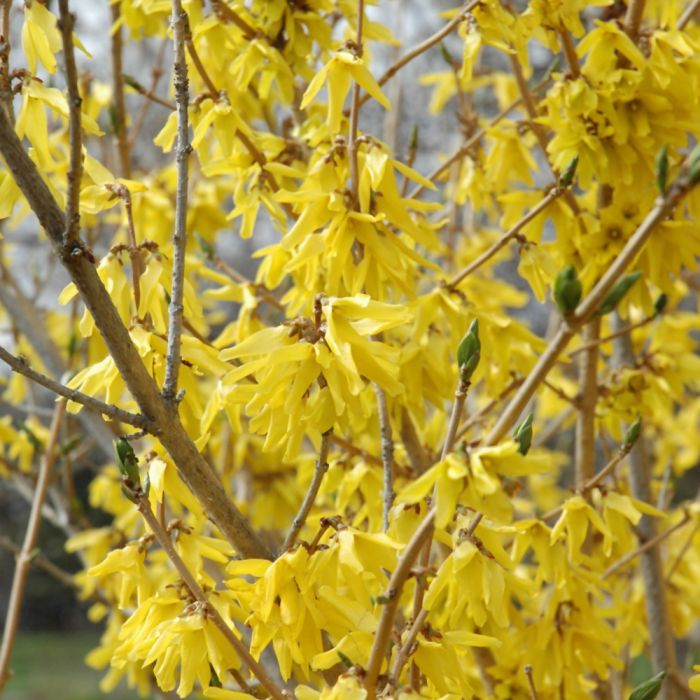Forsythia, 'Northern Gold'




- Sun Preference
- Full-Sun, Part-Sun
Description
This shrub is the undisputed harbinger of spring, with prolific yellow flowers smothering the branches in early spring ahead of the leaves; fades into the background the rest of the year; a vigorous cultivar, probably the hardiest variety available
Minnesota's Largest Selection of Shrubs
Elevate your landscaping with Gertens' unmatched variety of shrubs! Selecting the right shrubs for your backyard can enhance its beauty and functionality. Consider factors like sunlight, soil type, and mature size when choosing shrubs. For sunny areas, flowering shrubs like roses or hydrangeas can add color and charm. In shady spots, opt for shrubs like azaleas or hostas. Evergreen shrubs provide year-round interest and privacy, while deciduous shrubs offer seasonal color changes. At Gertens, we offer a wide selection of shrubs to suit every backyard need.
Details
Height: 8 feet
Spread: 7 feet
Sunlight:![]()
Hardiness Zone: 3a
Other Names: Goldenbells
Description:
This shrub is the undisputed harbinger of spring, with prolific yellow flowers smothering the branches in early spring ahead of the leaves; fades into the background the rest of the year; a vigorous cultivar, probably the hardiest variety available
Ornamental Features
Northern Gold Forsythia is covered in stunning gold bell-shaped flowers along the branches in early spring before the leaves. The flowers are excellent for cutting. It has forest green foliage throughout the season. The pointy leaves do not develop any appreciable fall color. The fruit is not ornamentally significant.
Landscape Attributes
Northern Gold Forsythia is a multi-stemmed deciduous shrub with an upright spreading habit of growth. Its average texture blends into the landscape, but can be balanced by one or two finer or coarser trees or shrubs for an effective composition.
This is a relatively low maintenance shrub, and should only be pruned after flowering to avoid removing any of the current season's flowers. Deer don't particularly care for this plant and will usually leave it alone in favor of tastier treats. It has no significant negative characteristics.
Northern Gold Forsythia is recommended for the following landscape applications;
- Mass Planting
- Hedges/Screening
- General Garden Use
Planting & Growing
Northern Gold Forsythia will grow to be about 8 feet tall at maturity, with a spread of 7 feet. It tends to be a little leggy, with a typical clearance of 2 feet from the ground, and is suitable for planting under power lines. It grows at a fast rate, and under ideal conditions can be expected to live for 40 years or more.
This shrub should only be grown in full sunlight. It is very adaptable to both dry and moist locations, and should do just fine under average home landscape conditions. It is not particular as to soil type or pH, and is able to handle environmental salt. It is highly tolerant of urban pollution and will even thrive in inner city environments. This particular variety is an interspecific hybrid.
| SKU | Container Size |
| S1486 | #2 Container (2 Gallon) |
| S1488 | #5 Container (5 Gallon) |
* Not all container sizes may be available at this time. See store for details on specific container size availability.
More Information
| Gerten Grown Plants | Gerten Grown Plants |
|---|---|
| Sun Preference | Full-Sun, Part-Sun |
| Mature Height (Range) | 5 - 10 feet |
| USDA Hardiness Zone | 3, 4, 5, 6, 7, 8 |
| Common Family Name | Forsythia |


